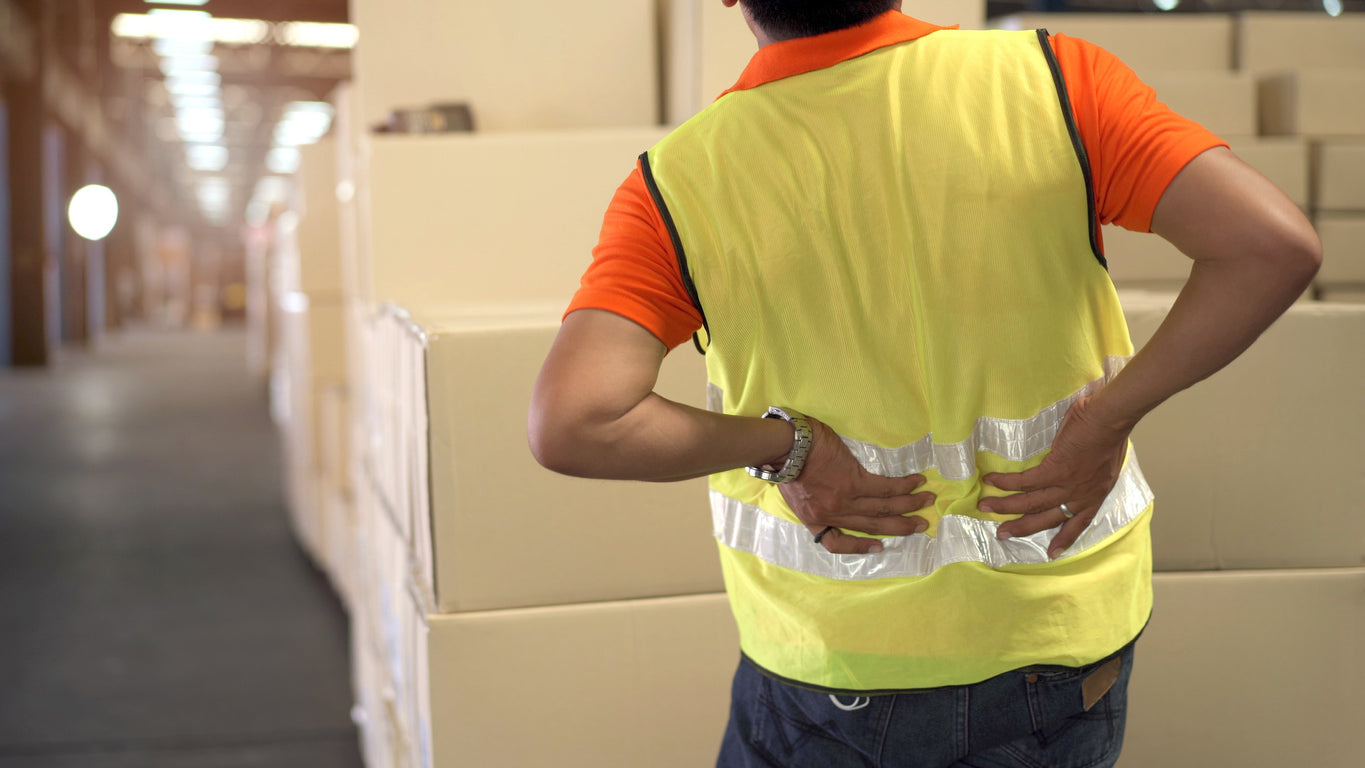
Manual Handling in the Workplace
| James Christie
Manual handling refers to the physical movement of objects or materials in the workplace. It's an important aspect of many jobs, but it can also lead to injuries if not done properly. In fact, manual handling injuries are one of the most common types of injuries in the workplace, accounting for around a third of all workers' compensation claims in Australia.
In this blog post, we'll go through some tips and strategies for reducing manual handling injuries in the workplace for Australians.
Understand the Risks
It is important to consider the environment in which manual handling tasks are performed, as certain conditions can increase the risk of injuries to personnel. These may include poorly lit or cluttered workspaces, uneven surfaces, and wet or slippery floors. Additionally, the use of improper lifting practice's or inadequate personal protective equipment (PPE) can also contribute to the risk of injury.
- Lifting or carrying heavy objects
- Twisting or bending while lifting or carrying
- Repetitive movements
- Working in awkward positions
- Working with vibrating machinery
By understanding these risk factors, you can take steps to mitigate them and reduce the chances of injury.
Follow Proper Lifting Techniques
Proper lifting techniques are essential for reducing manual handling injuries. Some tips to follow include:
Keep the load close to your body: When lifting an object, it is important to keep it as close to your body as possible. This helps to distribute the weight evenly and reduces the potential strain on your back. If the object is held far away from your body, it will create a unbalance effect that can cause your spine to bend and twist, increasing the risk of injury.
Bend at the knees, not the waist - just an age old saying: When lifting an object, it is important to bend at the knees rather than at the waist. Bending at the waist puts a lot of strain on your lower back muscles and can cause them to become strained or injured. Bending at the knees allows you to use your leg muscles to lift the object, which are much stronger and better equipped to handle the load.
Use your leg to lift, not your back: It is important to use your leg muscles to lift objects rather than relying on your back muscles. Your leg muscles are much stronger and better equipped to handle the load, so using them to lift will help to reduce the strain on your back and prevent injury.
Avoid twisting or reaching while lifting: Twisting or reaching while lifting can also put a lot of strain on your back muscles and increase the risk of injury. To avoid this, make sure that you are facing the object you are lifting and that you have a good grip on it before attempting to lift it. If you need to turn or move the object once it is lifted, do so by pivoting your feet rather than twisting your torso.
Get help if the load is too heavy: If you are unsure whether you can safely lift an object on your own, it is always best to ask for help. It is better to err on the side of caution and get someone to assist you rather than risking injury by trying to lift a load that is too heavy for you. Here in Australia we have a rough guide of 15 to 20 kilograms as a weight limit requiring a Double Lift
Use Mechanical Aids
Mechanical aids, such as forklifts and hoists, can help reduce the physical demands of manual handling. If your workplace involves a lot of manual handling, consider investing in these types of aids to make the job easier and safer. Hardest part of a forklift is having someone who is licenced to operate the vehicle. Our Mini Pallet is able to reduce the impact of strains and unnecessary lifting or body jerks. The product simply sits on the Mini Pallet until it is ready for the item to be transported or used. The team member just needs to be disciplined enough to place an item on a Mini Pallet once and then never lift it again.
Provide Adequate Training
Proper training is essential for reducing manual handling injuries. Make sure that all employees who are involved in manual handling tasks receive proper training on how to do the job safely. This should include training on proper lifting techniques and the use of mechanical aids.
Design the Workplace for Safety
The layout and design of the workplace can also have an impact on manual handling injuries. Some strategies for designing a safer workplace include:
- Providing ample space for maneuvering and handling materials
- Keeping walkways and aisles clear of obstructions
- Installing conveyor belts or other mechanical aids to reduce the need for manual handling
- Ensuring that materials are stored at a convenient height for lifting
Provide Adequate PPE
Personal protective equipment or PPE can also help reduce the risk of manual handling injuries in the workplace. PPE include gloves, safety goggles, steal cap boots, aprons, earmuffs and other items designed to protect the body while carrying out demanding or potentially risky tasks. Make sure that all employees who are involved in manual handling tasks have access to the appropriate PPE.
Reducing manual handling injuries in the workplace is important for the health and safety of your employees. By following these tips and strategies, you can create a safer and more efficient workplace.

